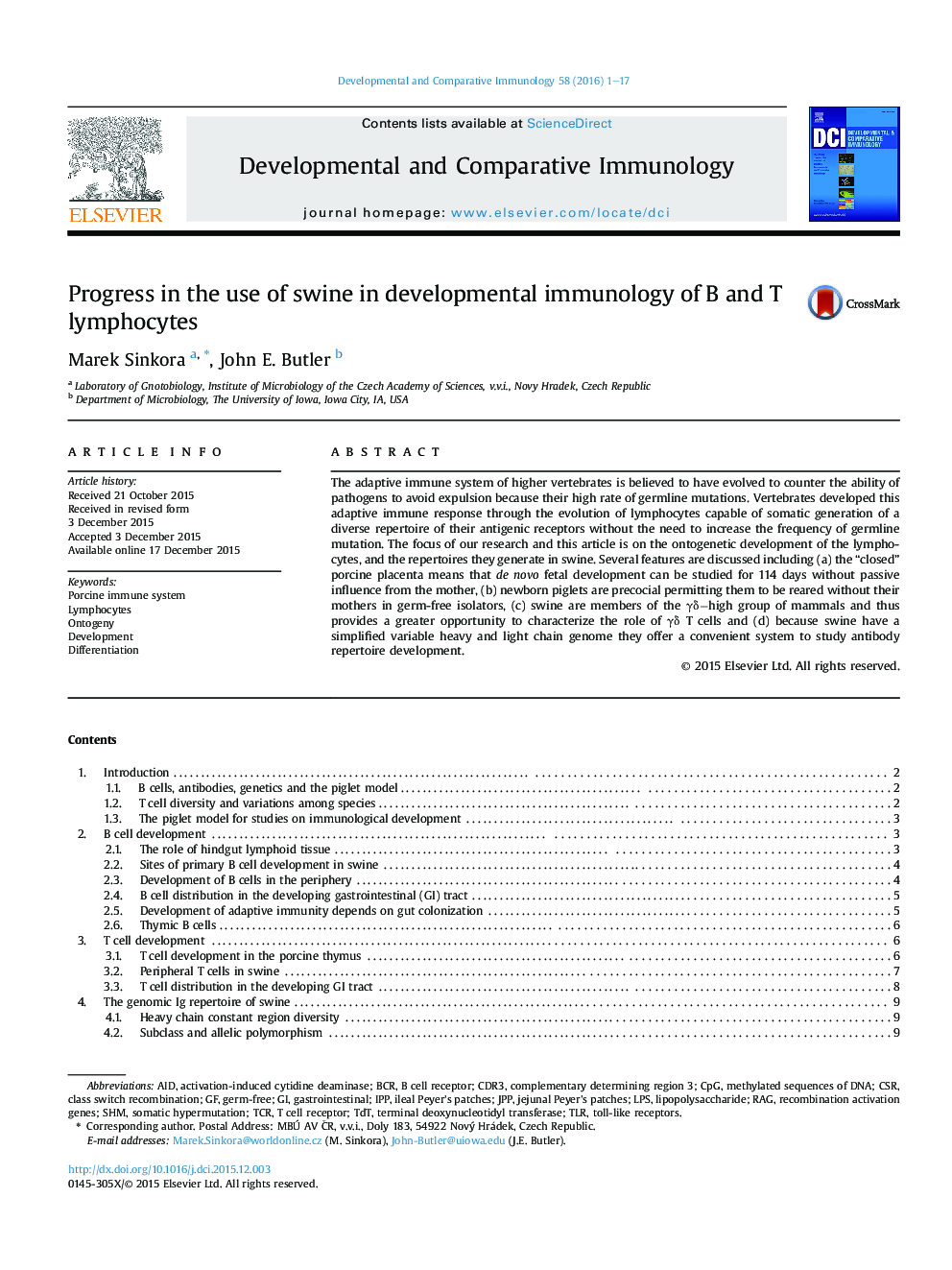| Article ID | Journal | Published Year | Pages | File Type |
|---|---|---|---|---|
| 2428820 | Developmental & Comparative Immunology | 2016 | 17 Pages |
•The review focus on the ontogenetic development of porcine adaptive immunity.•Features of porcine adaptive immunity are compared to that of other species.•Properties of lymphocytes and their receptors differs among vertebrates.
The adaptive immune system of higher vertebrates is believed to have evolved to counter the ability of pathogens to avoid expulsion because their high rate of germline mutations. Vertebrates developed this adaptive immune response through the evolution of lymphocytes capable of somatic generation of a diverse repertoire of their antigenic receptors without the need to increase the frequency of germline mutation. The focus of our research and this article is on the ontogenetic development of the lymphocytes, and the repertoires they generate in swine. Several features are discussed including (a) the “closed” porcine placenta means that de novo fetal development can be studied for 114 days without passive influence from the mother, (b) newborn piglets are precocial permitting them to be reared without their mothers in germ-free isolators, (c) swine are members of the γδ−high group of mammals and thus provides a greater opportunity to characterize the role of γδ T cells and (d) because swine have a simplified variable heavy and light chain genome they offer a convenient system to study antibody repertoire development.
